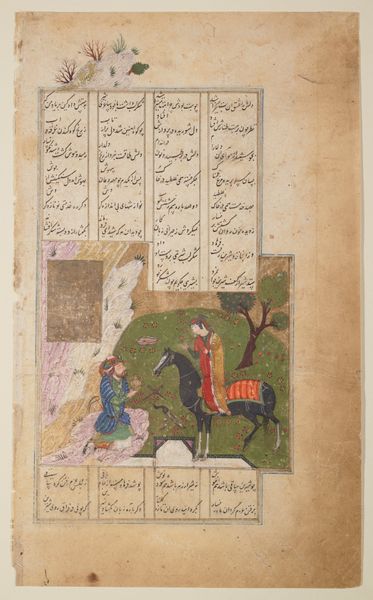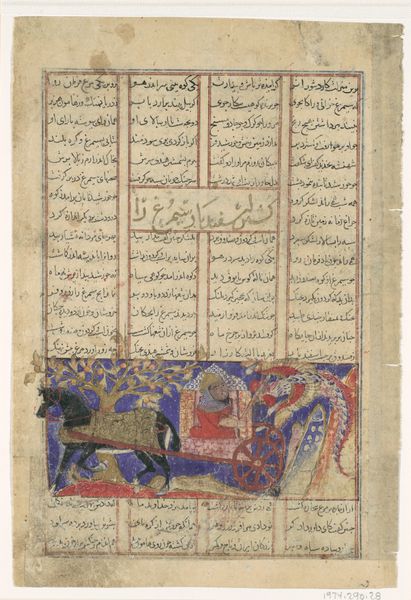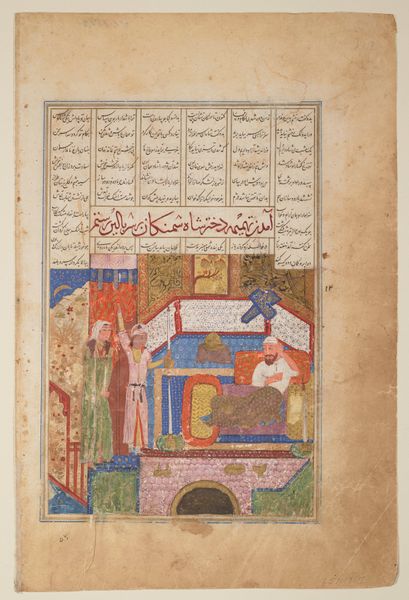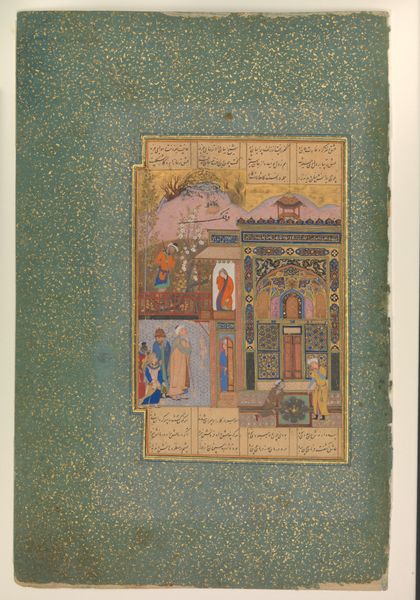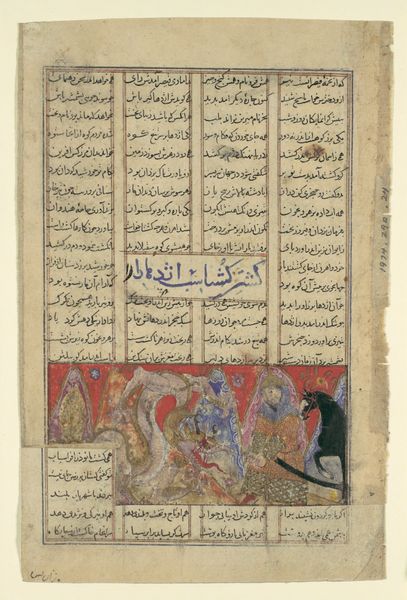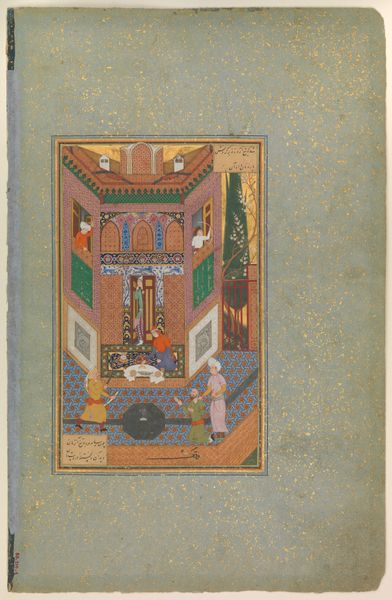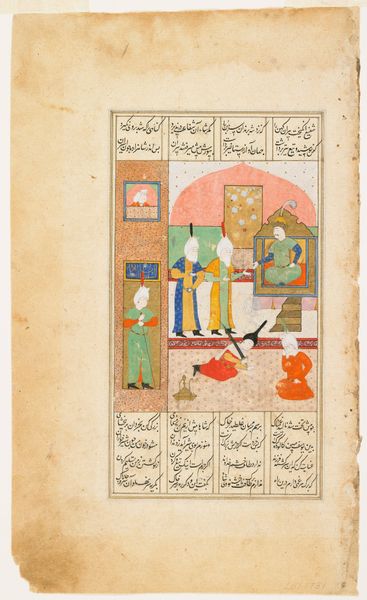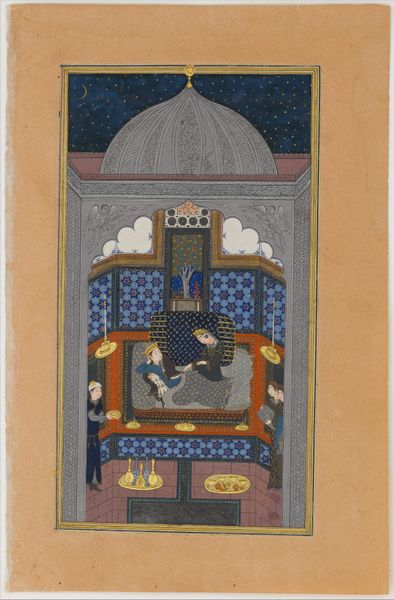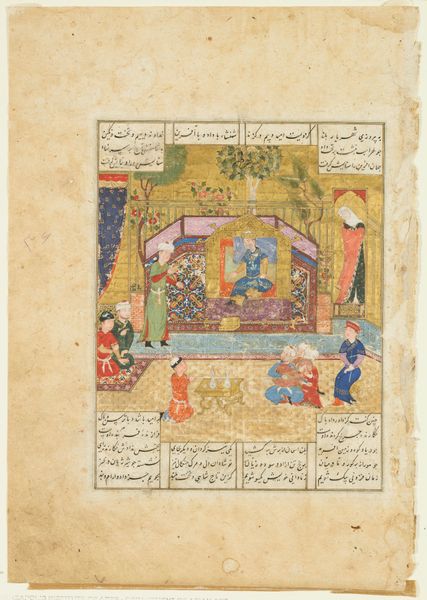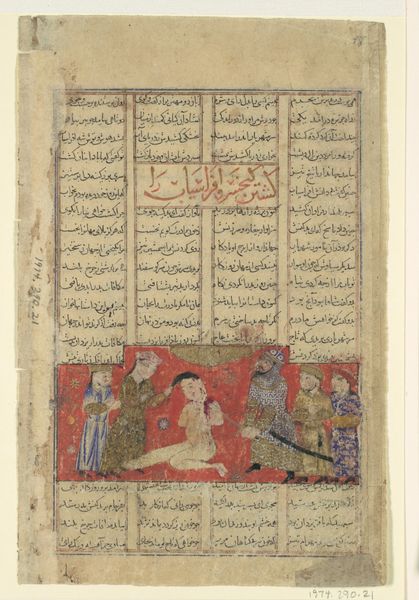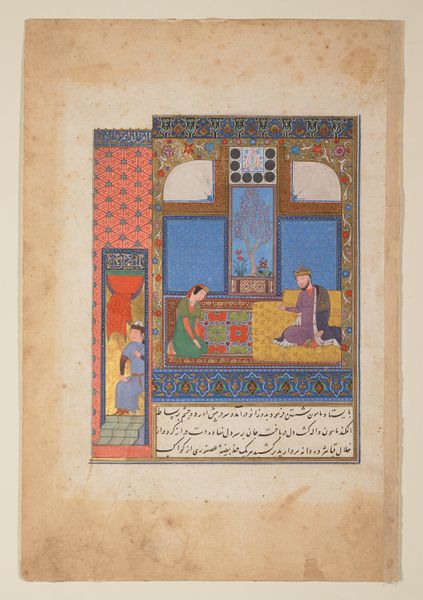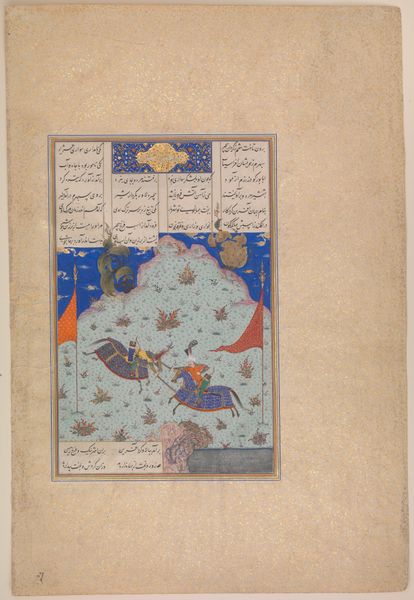
painting, watercolor, ink
#
water colours
#
narrative-art
#
painting
#
asian-art
#
figuration
#
watercolor
#
ink
#
coloured pencil
#
islamic-art
#
miniature
Copyright: Public Domain
“Bahram Gur in the Black Palace” is an anonymous painting on paper, and depicts a scene from the Persian epic, the Shahnameh. Paintings such as this one are products of a rich tradition in Iran, and were originally included in lavishly illustrated manuscripts commissioned by royalty. This visual culture was not just about aesthetics; it reflected the patron's power, taste, and complex cultural identity. In this work, Bahram Gur is shown in the Black Palace, one of seven palaces, each associated with a different day of the week, planet, color, and princess. This painting speaks to the intricacies of cross-cultural exchange. The image is a window into the symbolic language used to convey moral and political ideas. In these paintings, identity is a fluid concept, negotiated across artistic traditions and cultural values.
Comments
minneapolisinstituteofart almost 2 years ago
⋮
Like the story of Khasrau and Shirin, the Haft Paiker section of the Khamsa is based on the heroic exploits of ancient Sassanian kings. This page shows King Bahram Gur visiting the pavilion of the princess of the Black Hall. A notable development in miniature painting occurred in the sixteenth century when painters began to produce albums based on popular literary and portrait themes without text for noble and aristocratic patrons. Typically, the works from the Shiraz, Herat, and Tabriz workshops employed bright colors, ordered compositions, and exacting calligraphic passages.
Join the conversation
Join millions of artists and users on Artera today and experience the ultimate creative platform.
